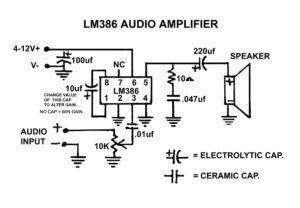Slowly but surely in still learning Morse code. I’ve been using lcwo.net, but I’ve discovered that that is really limiting my potential practice time. I haven’t tried many apps, but Morse Mentor seems to offer most of the same features as lcwo. Koch method, Farnsworth timing, etc. I’m working with character speed at 20wpm, but Farnsworth of 5wpm. I’m doing well at that speed, but I know I’ll have to speed it up a lot to get on the air. I hope to be proficient at cw and have a QRP rig built by the time I go to Burning Man this year. Oh and I hope to get my general class ticket!
Month: May 2016
General Class Ticket
I’m starting to study for my General Class license. I ordered the previous edition of the the Gordon West book from abebooks.com for around $3. With this book and some online sample tests, I think I should be able to pass the test with relative ease. It would be really cool to get to upgrade at Burning Man this year since I got my tech just last year. When I started trying to do anything with ham radio, I didn’t think I’d be able to even consider an upgrade in just a year. Now it looks like a pretty reasonable expectation.
I’m getting better at morse code!
Today, while practicing at lcwo.org, I finally felt like I was really hearing the letters and not just beeps! What a cool feeling. I think that little moment was just the thing to keep me excited about learning morse code. I’m only up to 4 letters, but I’m already getting 90% copy most of the time!
CW is difficult for me
I’m using lcwo.net, but I’m having real trouble copying at 20 WPM characters with 5 WPM spacing (effective 10 WPM). I think part of the problem is that I have trouble recovering when I miss a character. I just kind of spaz out. Now, I haven’t been sticking with any schedule let alone daily practice, but I’m determined to get it. I really need an HF receiver and antenna so I can listen to other beginners.
Simple LM386 Op Amp
I’ve been wanting to build myself a little amp for my phone, mp3 player, etc. for awhile. Originally, I wanted to build something completely from discrete components but finally gave into using the LM386 IC. The datasheet is very helpful and even includes several circuits to try out. It’s a very simple circuit to get the little amp built and working, but I kept having trouble with terrible distortion rendering the amp unusable. I kept tinkering, troubleshooting, researching, and so on, only to discover that one of the power rails on my breadboard is bad. Lame. Once I figured that out, then the circuit really is simple! You can find variations of this circuit all over the internet, but I ended up using the circuit from Dino over at Hack A Week. This guy is pretty awesome and has very informative and entertaining instructional videos. His circuit and BOM is listed below.
- Enclosure of your choice
- 10 ohm resistor
- 10K potentiometer
- 220 uf polarized capacitor
- 100 uf polarized capacitor
- 10 uf polarized capacitor
- .01 uf ceramic capacitor
- .047uf ceramic capacitor
- 2x 1/8″ mini audio jacks
- 2x 1/4″ audio jacks
- 9 volt battery clip
- 9 volt battery
- small perforated circuit board
- Some hookup wire
- A speaker of your choice for output.

A lot of the discrete parts for this project I salvaged from various things. I used my little LEXPON Multifunction Transistor Tester to test my components and to double check values on the capacitors. Dino’s BOM for the project is for a finished device, but you can skip a bunch of the items to just build it on a breadboard and get it working. I had a 10k pot with a built in on/off switch that I used and I also wired in a little LED to remind me to turn off the circuit and not run down the battery. Using a salvaged 1w speaker plugged directly into the circuit on the breadboard, I got pretty clear audio from the output on my laptop. It’s always exciting to get stuff like this to work no matter how simple. Now to do something useful with it…